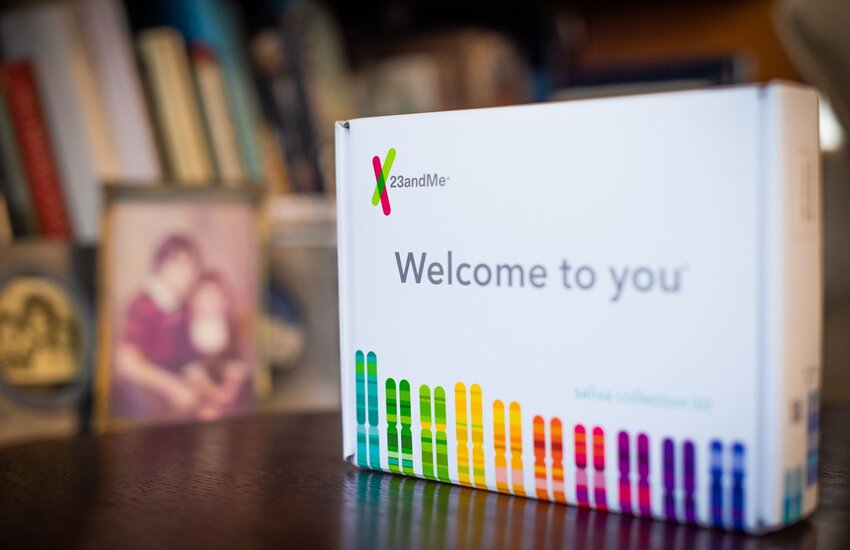23andMe (NASDAQ:ME), a pioneer in consumer genetics, is once again at the center of acquisition talks, with co-founder and CEO Anne Wojcicki reportedly open to third-party takeovers. This comes after her recent attempt to take the company private was rejected by the board. The idea of taking the company private is still under consideration, even as the company grapples with challenges, including revenue declines and listing compliance concerns with NASDAQ. On the upside, 23andMe continues to innovate and grow its business in areas such as telehealth, therapeutics, and its proprietary research data business, leveraging one of the world’s largest genetic databases. However, the company’s shrinking consumer business, revenue drops, and cash burn rate present challenges. Let us take a closer look at the various factors that make 23andMe a potential acquisition target and why Anne Wojcicki may continue her efforts to take the company private.
Access To A Massive Genetic Databases
23andMe’s unique genetic database is one of its most valuable assets and a key reason it could attract acquirers. With millions of customers who have consented to contribute their genetic data to research, the company has built a goldmine of valuable information that can be used for medical research, drug discovery, and personalized healthcare. The scale of this data provides a competitive advantage in the fields of genomics and therapeutics. This database has already been used to identify genetic markers for diseases like cancer and Parkinson’s, and it has potential applications in various other medical fields. Additionally, the company has collaborated with pharmaceutical companies like GlaxoSmithKline in the past to leverage this database for drug discovery, enhancing its monetization opportunities. For an acquiring company, the database offers immediate access to a wealth of genetic information that could accelerate the development of therapeutics, improve the accuracy of clinical trials, and facilitate breakthroughs in personalized medicine. However, managing and expanding this database also comes with significant privacy and regulatory hurdles, as 23andMe must ensure compliance with increasingly stringent global data privacy regulations. Nonetheless, the data-rich asset remains one of the strongest drivers for both external acquirers and Wojcicki’s push to privatize the company to fully unlock its potential.
Growing Telehealth and Consumer Health Businesses
Another major factor that could make 23andMe an attractive acquisition target is its expansion into the telehealth space through its Lemonaid Health platform, which offers services like online prescriptions for genetic health management. The company has introduced new offerings such as a telehealth membership for weight loss management, where members can receive prescriptions for medications like semaglutide. This is a strategic pivot from its core genetic testing business, allowing 23andMe to tap into the growing market for personalized healthcare services. By integrating telehealth with genetic data, the company can offer a more holistic approach to health management, creating a unique competitive edge. The telehealth business also complements its genetic testing services, driving higher lifetime value (LTV) per customer and improving membership retention metrics. For acquirers, this diversification into telehealth offers an opportunity to enter the rapidly growing health-tech space. It could provide synergies with existing healthcare services and platforms that rely on digital health technologies. On the flip side, the company’s telehealth initiatives are still in their early stages, and their long-term profitability remains uncertain. Additionally, scaling these services effectively requires significant investment in technology and marketing. This dual potential for growth and risk could also be a reason why Wojcicki may want to take the company private, allowing more flexibility in executing her long-term vision for integrating telehealth with genetic insights without the pressures of quarterly earnings reports.
Strategic Therapeutic Developments in Oncology
23andMe’s foray into therapeutic development, particularly in oncology, presents another significant driver for acquisition interest. The company’s clinical-stage therapeutic assets, such as its lead candidate 23ME-610, which targets the CD200R1 pathway in cancer treatment, have shown promising results. The company is advancing this candidate through clinical trials and exploring potential combination therapies that could enhance its effectiveness. In addition to its internal assets, 23andMe has demonstrated the ability to leverage its genetic database for therapeutic discovery, identifying hundreds of new drug targets through its proprietary research model. This creates a lucrative opportunity for pharmaceutical companies seeking to expand their oncology portfolios or enhance their precision medicine capabilities. For potential acquirers, acquiring 23andMe would offer access to its therapeutic pipeline, which could be further developed and commercialized. Furthermore, the company's ability to combine genetic insights with drug development can lead to more personalized treatment options, improving patient outcomes and creating new revenue streams. However, the development and commercialization of these therapies will require significant time, investment, and regulatory approval, which may not align with the risk appetite of all acquirers. Anne Wojcicki’s continued interest in taking the company private may stem from the desire to pursue these high-potential but high-risk therapeutic projects without the scrutiny of public markets, where short-term profitability is often prioritized over long-term strategic investments.
Final Thoughts
Source: Yahoo Finance
As we can see above 23andMe’s stock price has been below the $0.50 mark over the past couple months. The company stands as a potential acquisition target due to its valuable genetic database, growing telehealth business, and promising therapeutic assets. While these factors present significant growth opportunities, they also come with inherent risks, including the challenges of scaling its telehealth platform, the regulatory complexities surrounding its genetic data, and the long road to commercialization for its therapeutic pipeline. Whether the company is acquired by a third party or taken private by its co-founder, its extreme high volatility and low market cap and volume make it a very risky investment. Even for long-term investors with a very high risk appetitie, the decision to invest in 23andMe ultimately hinges on one's confidence in its ability to execute on these opportunities and overcome the challenges it faces in a highly competitive and regulated industry.

